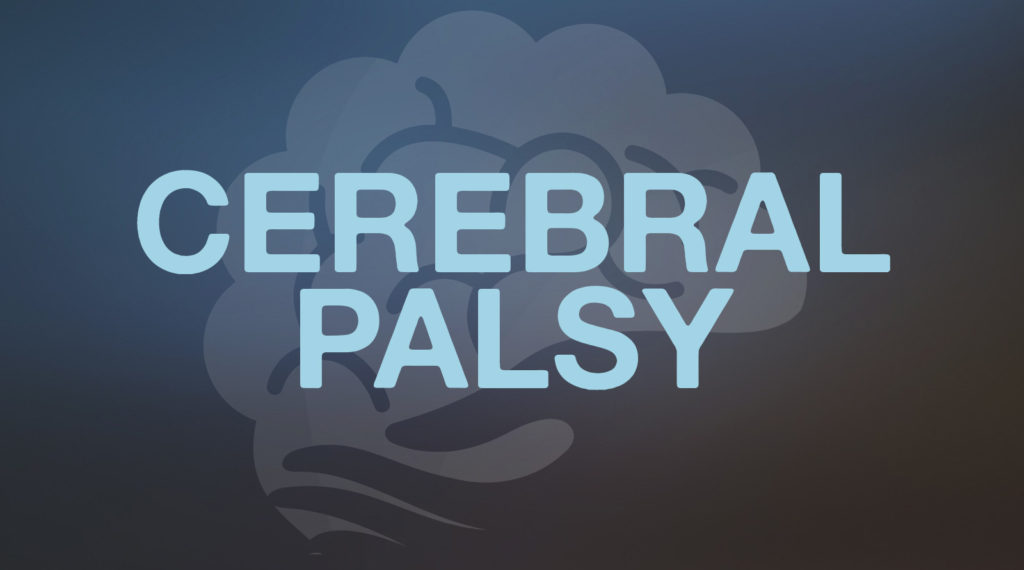Click here to view all Different Brains content about Cerebral Palsy
What is Cerebral Palsy?
Cerebral palsy refers to a group of neurological disorders that appear in infancy or early childhood and permanently affect body movement and muscle coordination Cerebral palsy (CP) is caused by damage to or abnormalities inside the developing brain that disrupt the brain’s ability to control movement and maintain posture and balance. The term cerebral refers to the brain; palsy refers to the loss or impairment of motor function.
Cerebral palsy affects the motor area of the brain’s outer layer (called the cerebral cortex), the part of the brain that directs muscle movement.
In some cases, the cerebral motor cortex hasn’t developed normally during fetal growth. In others, the damage is a result of injury to the brain either before, during, or after birth. In either case, the damage is not repairable and the disabilities that result are permanent.
Children with CP exhibit a wide variety of symptoms, including:
- lack of muscle coordination when performing voluntary movements (ataxia);
- stiff or tight muscles and exaggerated reflexes (spasticity);
- weakness in one or more arm or leg;
- walking on the toes, a crouched gait, or a “scissor” gait;
- variations in muscle tone, either too stiff or too floppy;
- excessive drooling or difficulties swallowing or speaking;
- shaking (tremor) or random involuntary movements;
- delays in reaching motor skill milestones; and
- difficulty with precise movements such as writing or buttoning a shirt.
Cerebral Palsy Symptoms
The symptoms of CP differ in type and severity from one person to the next, and may even change in an individual over time. Symptoms may vary greatly among individuals, depending on which parts of the brain have been injured. All people with cerebral palsy have problems with movement and posture, and some also have some level of intellectual disability, seizures, and abnormal physical sensations or perceptions, as well as other medical disorders. People with CP also may have impaired vision or hearing, and language, and speech problems.
CP is the leading cause of childhood disabilities, but it doesn’t always cause profound disabilities. While one child with severe CP might be unable to walk and need extensive, lifelong care, another child with mild CP might be only slightly awkward and require no special assistance. The disorder isn’t progressive, meaning it doesn’t get worse over time. However, as the child gets older, certain symptoms may become more or less evident.
A study by the Centers for Disease Control and Prevention shows the average prevalence of cerebral palsy is 3.3 children per 1,000 live births.
There is no cure for cerebral palsy, but supportive treatments, medications, and surgery can help many individuals improve their motor skills and ability to communicate with the world.
Runner With Cerebral Palsy Gets Contract With Nike (3 min 29 sec):
Click here for more Week in Neurodiversity!
Cerebral Palsy Resources
Cerebral Palsy Foundation From their website: The Cerebral Palsy Foundation process is to find, define and address Moments of Impact – the times at which interventions and insights, if properly implemented, have the power to improve lives. We then work to better understand what is needed to effect change and the best ways to implement it. We seek out the best thinkers in an area, and form collaborative networks to work together and bring about transformation. Finally, we share our work with others so it will have the greatest possible impact. Our Collaborative Networks bring together many of the country’s most prestigious medical institutions, as well as innovative thinkers in diverse areas such as technology and media, in order to accelerate not only the development of critical advances, but also their delivery.
My Child At CerebralPalsy.org From their website: As a comprehensive resource for everything related to Cerebral Palsy, MyChild™ provides information, tips, resources, encouragement and inspiration to individuals touched by Cerebral Palsy. Most parents today are so busy with medical appointments, family obligations, and work that it can be difficult, if not impossible, to spend hours looking for resources. MyChild™’s comprehensive website is designed as a one-stop destination for information about information, resources, inspiration and sources of support. The information is on one website for easy, time-sensitive access day or night. And, when you have questions, our call center representatives are available to assist. Finding the resources and support can seem overwhelming and cumbersome. MyChild™ hopes to connect you with the information you need, when you need it.


